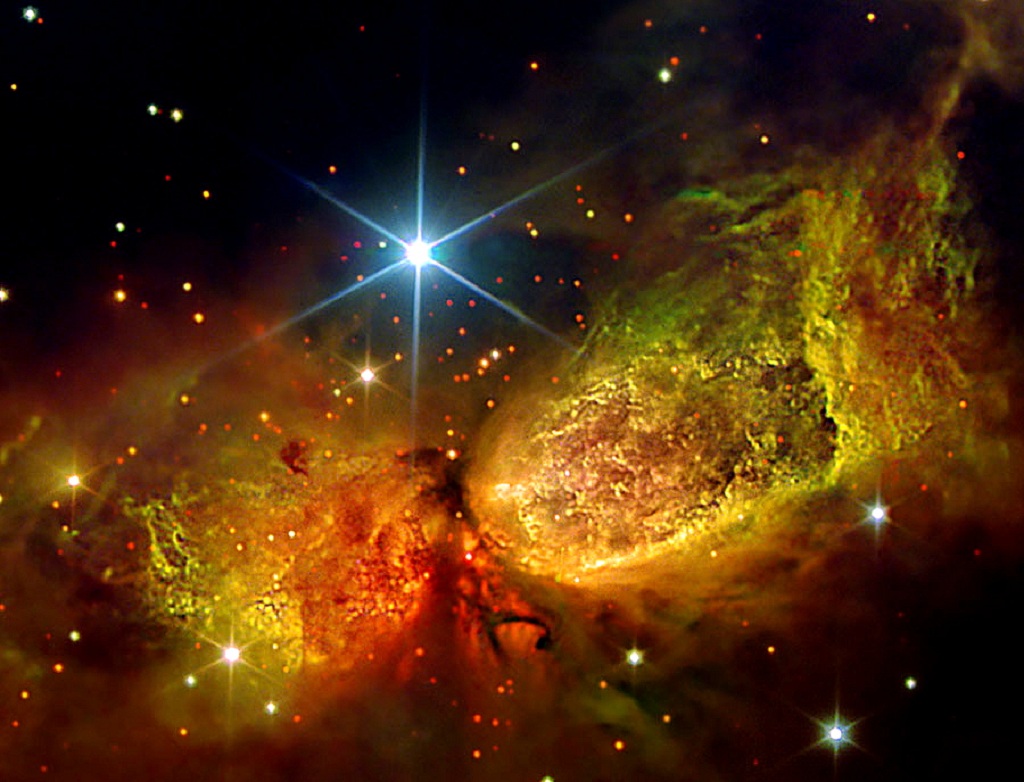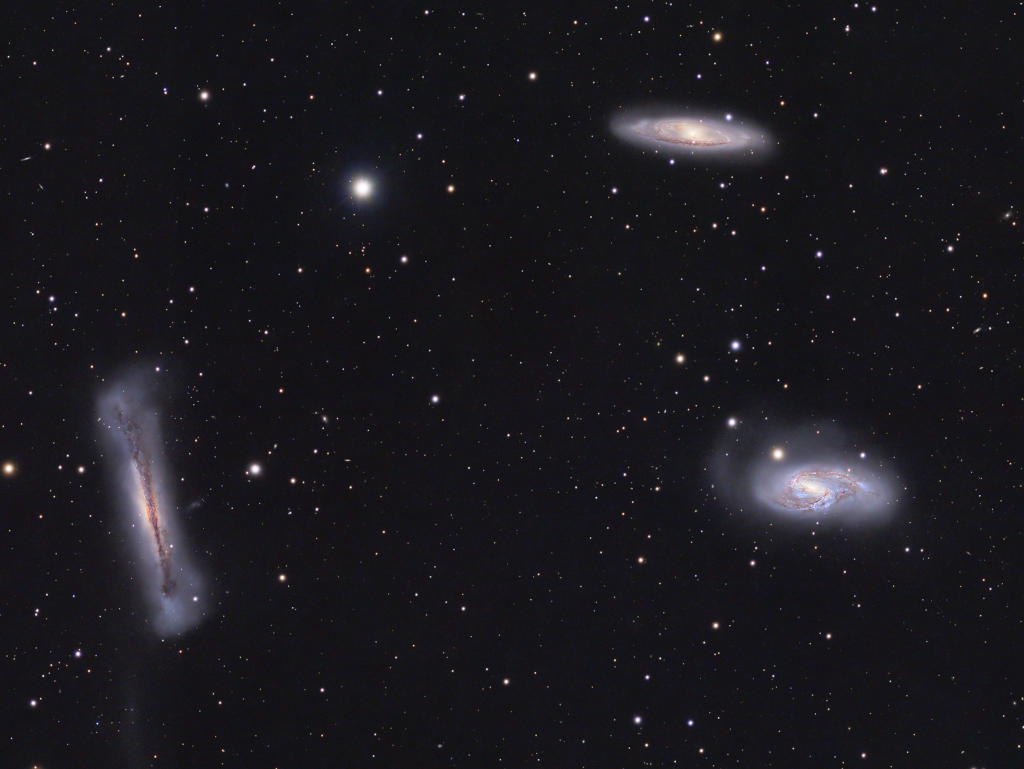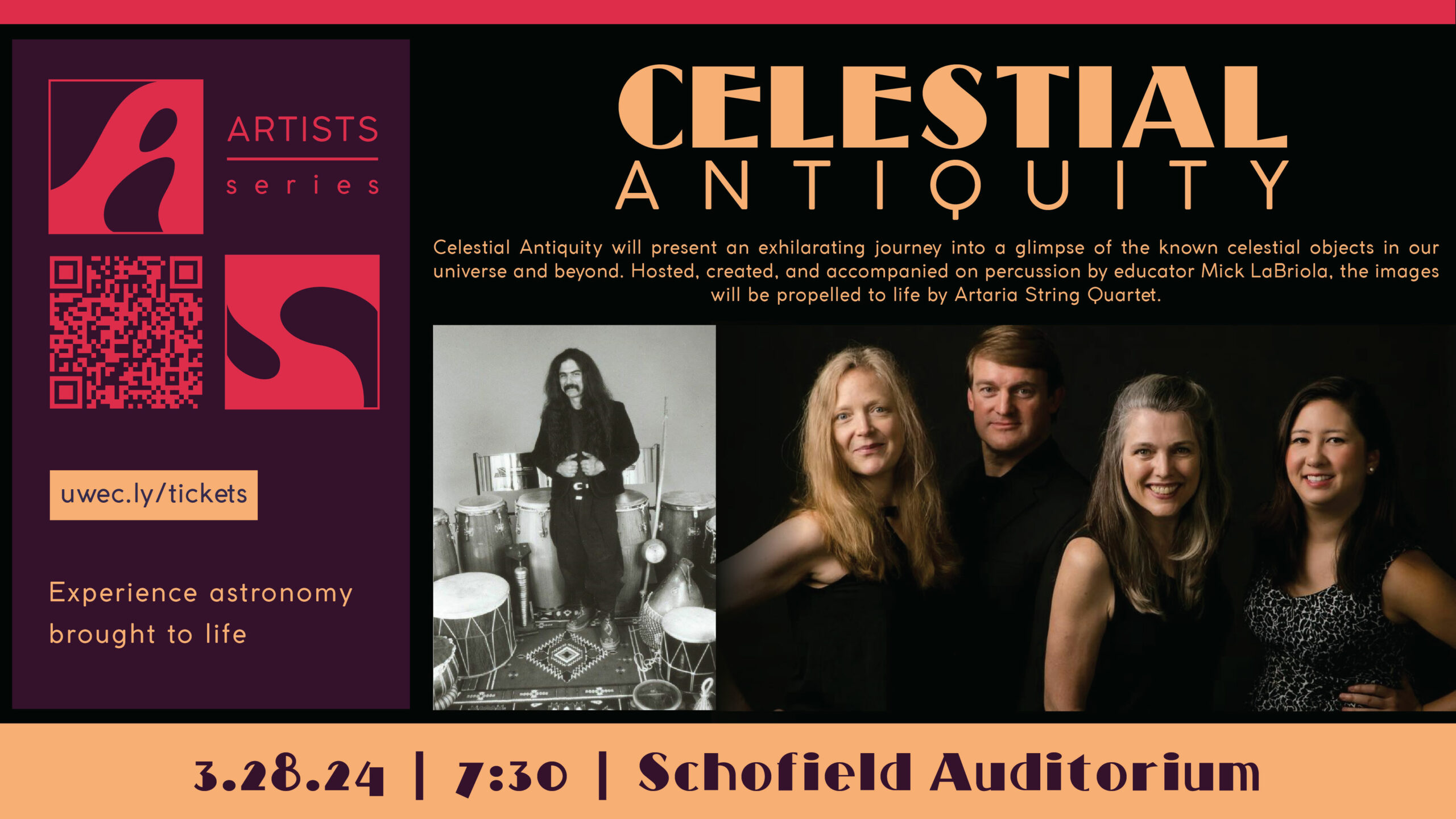Blog
Sharpless 2-106 (Sh2-106 or S106 for short) is a bipolar emission nebula and HII region. It measures about 2 light-years long by 0.5 light-year wide and is located about 2,000 light-years away in the constellation of Cygnus (the Swan), in a relatively isolated region of the Milky Way. Its mass may be as high as 25,000 times the mass of our Sun.

David Jay Grisman (born March 23, 1945) is an American mandolinist. His music combines bluegrass, folk, and jazz in a genre he calls “Dawg music”. He founded the record label Acoustic Disc, which issues his recordings and those of other acoustic musicians. He was inducted into the International Bluegrass Music Hall of Fame in 2023.
Grisman grew up in a Conservative Jewish household in Passaic, New Jersey. His father was a professional trombonist who gave him piano lessons when he was seven years old. As a teenager, he played piano, mandolin, and saxophone.
In the early 1960s, he attended New York University. He belonged to the Even Dozen Jug Band with Maria Muldaur and John Sebastian. He played in the bluegrass band the Kentuckians led by Red Allen, then in the psychedelic rock band Earth Opera with Peter Rowan. He moved to San Francisco, met Jerry Garcia, and appeared on the Grateful Dead album American Beauty. He played in Garcia’s bluegrass band Old & In the Way with Peter Rowan and Vassar Clements. When Grisman was 17 years old, he was invited on stage by Doc Watson to join him on mandolin for a rendition of “In the Pines”.
more...David Samuel Pike (March 23, 1938 – October 3, 2015) was an American jazz vibraphone and marimbaplayer. He appeared on many albums by Nick Brignola, Paul Bley and Kenny Clarke, Bill Evans, and Herbie Mann. He also recorded extensively as leader, including a number of albums on MPS Records.
He learned drums at the age of eight and was self-taught on vibraphone. Pike made his recording debut with the Paul Bley Quartet in 1958. He began putting an amplifier on his vibes, when working with flautist Herbie Mann in the early-1960s. By the late-1960s, Pike’s music became more exploratory, contributing a unique voice and new contexts that pushed the envelope in times remembered for their exploratory nature. The Doors of Perception, released in 1970 for the Atlantic Records subsidiary Vortex Records, and produced by former boss Herbie Mann, explored ballads, modal territory, musique concrète, with free and lyrical improvisation, and included musicians including alto saxophonist Lee Konitz, bassist Chuck Israels and pianist Don Friedman.
more...
Granville Henry “Stick” McGhee (March 23, 1918 – August 15, 1961) was an American jump bluesguitarist, singer and songwriter, best known for his blues song “Drinkin’ Wine, Spo-Dee-O-Dee“, which he wrote with J. Mayo Williams.
McGhee was born in Knoxville, Tennessee, and grew up in Kingsport, Tennessee. He received his nickname when he was a child. He used a stick to push a wagon carrying his older brother Brownie McGhee, who had contracted polio. Granville began playing the guitar when he was thirteen years old. After his freshman year he dropped out of high school and worked with his father at the Eastman Kodaksubsidiary, Tennessee Eastman Company in Kingsport. In 1940, Granville quit his job and moved to Portsmouth, Virginia, and then to New York City. He entered the military in 1942 and served in the U.S. Army during World War II. After being discharged in 1946, he settled in New York.
more...
Accompanying Erev Shabbat Service at Temple Israel Friday March 22nd 6pm. Music with Jayson Rodovsky, Jeff Bailey, Pete Whitman and mick laBriola.
more...IC1871, part of the Soul Nebula also known as Sh2-199 and LBN667 is about 7500 light years distant in the constellation Cassiopeia.

Andrew Lloyd Webber, Baron Lloyd-Webber (born 22 March 1948) is an English composer and impresario of musical theatre. Several of his musicals have run for more than a decade both in the West End and on Broadway. He has composed 21 musicals, a song cycle, a set of variations, two film scores, and a Latin Requiem Mass.
Several of Lloyd Webber’s songs have been widely recorded and widely successful outside of their parent musicals, such as “Memory” from Cats, “The Music of the Night” and “All I Ask of You” from The Phantom of the Opera, “I Don’t Know How to Love Him” from Jesus Christ Superstar, “Don’t Cry for Me Argentina” from Evita, and “Any Dream Will Do” from Joseph and the Amazing Technicolor Dreamcoat. In 2001, The New York Times referred to him as “the most commercially successful composer in history”. The Daily Telegraph named him in 2008 the fifth-most powerful person in British culture, on which occasion lyricist Don Black said that “Andrew more or less single-handedly reinvented the musical.”
Lloyd Webber has received numerous awards, including a knighthood in 1992, followed by a peerage for services to the arts, six Tonys, seven Olivier Awards, three Grammys (as well as the Grammy Legend Award), an Academy Award, 14 Ivor Novello Awards, a Golden Globe, a Brit Award, the 2006 Kennedy Center Honors, and two Classic Brit Awards (for Outstanding Contribution to Music in 2008, and for Musical Theatre and Education in 2018). In 2018, after Jesus Christ Superstar Live in Concert won the Primetime Emmy Award for Outstanding Variety Special (Live), he became the thirteenth person to win an Oscar, an Emmy, a Grammy, and a Tony. He has a star on the Hollywood Walk of Fame, is an inductee into the Songwriters Hall of Fame, and is a fellow of the British Academy of Songwriters, Composers, and Authors.
The Really Useful Group, Lloyd Webber’s company, is one of the largest theatre operators in London. Producers in several parts of the UK have staged productions, including national tours, of Lloyd Webber musicals under licence from the Really Useful Group. He is also the president of the Arts Educational Schools, London, a performing arts school located in Chiswick, West London. Lloyd Webber is involved in a number of charitable activities, including the Elton John AIDS Foundation, Nordoff Robbins, Prostate Cancer UK and War Child. In 1992, he started the Andrew Lloyd Webber Foundation which supports the arts, culture, and heritage of the UK.
more...Stephen Joshua Sondheim (/ˈsɒndhaɪm/; March 22, 1930 – November 26, 2021) was an American composer and lyricist. Regarded as one of the most important figures in 20th-century musical theater, he is credited with reinventing the American musical. With his frequent collaborations with Harold Prince and James Lapine, Sondheim’s Broadway musicals tackled unexpected themes that ranged beyond the genre’s traditional subjects, while addressing darker elements of the human experience. His music and lyrics were tinged with complexity, sophistication, and ambivalence about various aspects of life.
Sondheim’s interest in musical theater began at a young age, and he was mentored by Oscar Hammerstein II. He began his career by writing the lyrics for West Side Story (1957) and Gypsy (1959). He transitioned to writing both music and lyrics for the theater, with his best-known works including A Funny Thing Happened on the Way to the Forum (1962), Company (1970), Follies (1971), A Little Night Music(1973), Sweeney Todd: The Demon Barber of Fleet Street (1979), Merrily We Roll Along (1981), Sunday in the Park with George (1984), Into the Woods (1987), and Passion (1994).
Sondheim’s numerous awards and nominations include eight Tony Awards, an Academy Award, eight Grammy Awards, an Olivier Award, and the Pulitzer Prize. He also was awarded the Kennedy Center Honor in 1993 and a Presidential Medal of Freedom in 2015.[6] A theater is named after him both on Broadway and in the West End of London. Film adaptations of his works include West Side Story (1961), Gypsy (1962), A Funny Thing Happened on the Way to the Forum (1966), A Little Night Music (1977), Sweeney Todd: The Demon Barber of Fleet Street (2007), Into the Woods (2014), and West Side Story(2021).
more...George Washington Benson (born March 22, 1943) is an American guitarist, singer, and songwriter. He began his professional career at the age of 19 as a jazz guitarist.
A former child prodigy, Benson first came to prominence in the 1960s, playing soul jazz with Jack McDuffand others. He then launched a successful solo career, alternating between jazz, pop, R&B singing, and scat singing. His album Breezin’ was certified triple-platinum, hitting no. 1 on the Billboard album chart in 1976. His concerts were well attended through the 1980s, and he still has a large following. Benson has won ten Grammy Awards and has been honored with a star on the Hollywood Walk of Fame.
more...Similar to its South American cousin, Tango Gitano consists of a simple, easily varied harmonic and melodic structure over a four-count rhythm. Unlike other four-count patterns, the first beat is weak while the other three beats are strong. As Tangos became a part of flamenco in the 19th century, certain aspects of older flamenco forms were folded into it, including 12-count soleares letras re-shaped to fit the four count rhythmic pattern. Tangos of Granada shows traces of Moorish Zambras, while the Tango de Cádiz, Tanguillos, is a compound rhythm of triplets and duplets.
more...the March equinox and the northern hemisphere spring. Famous as the Leo Triplet, the three magnificent galaxies found in the prominent constellation Leo gather here in one astronomical field of view. Crowd pleasers when imaged with even modest telescopes, they can be introduced individually as NGC 3628 (left), M66 (bottom right), and M65 (top). All three are large spiral galaxies but tend to look dissimilar, because their galactic disks are tilted at different angles to our line of sight. NGC 3628, also known as the Hamburger Galaxy, is temptingly seen edge-on, with obscuring dust lanes cutting across its puffy galactic plane. The disks of M66 and M65 are both inclined enough to show off their spiral structure. Gravitational interactions between galaxies in the group have left telltale signs, including the tidal tails and warped, inflated disk of NGC 3628 and the drawn out spiral arms of M66. This gorgeous view of the region spans over 1 degree (two full moons) on the sky in a frame that covers over half a million light-years at the trio’s estimated distance of 30 million light-years.

more...
David Perry Lindley (March 21, 1944 – March 3, 2023) was an American musician who founded the rock band El Rayo-X and worked with many other performers including Jackson Browne, Linda Ronstadt, Ry Cooder, Bonnie Raitt, Warren Zevon, Curtis Mayfield and Dolly Parton. He mastered such a wide variety of instruments that Acoustic Guitar magazine referred to him not as a multi-instrumentalist but instead as a “maxi-instrumentalist.” On stage, Lindley was known for wearing garishly colored polyester shirts with clashing pants, gaining the nickname the Prince of Polyester.
The majority of the instruments that Lindley played are string instruments, including violin, acoustic and electric guitar, upright and electric bass, banjo, mandolin, dobro, hardingfele, bouzouki, cittern, bağlama, gumbus, charango, cümbüş, oud and zither. He was the unparalleled master of the lap steel guitar in the rock music sphere, and an expert in Hawaiian-style slide guitar blues.
Lindley was a founding member of the 1960s psychedelic band Kaleidoscope and worked as musical director for several touring artists. He occasionally scored and composed music for film.
more...Solomon Vincent McDonald Burke (born James Solomon McDonald, March 21, 1940 – October 10, 2010) was an American singer who shaped the sound of rhythm and blues as one of the founding fathers of soul music in the 1960s. He has been called “a key transitional figure bridging R&B and soul”, and was known for his “prodigious output”.
He had a string of hits including “Cry to Me“, “If You Need Me“, “Got to Get You Off My Mind“, “Down in the Valley“, and “Everybody Needs Somebody to Love“. Burke was referred to honorificallyas “King Solomon”, the “King of Rock ‘n’ Soul”, “Bishop of Soul”, and the “Muhammad Ali of Soul”. Due to his minimal chart success in comparison to other soul music greats such as James Brown, Wilson Pickett, and Otis Redding, Burke has been described as the genre’s “most unfairly overlooked singer” of its golden age. Atlantic Records executive Jerry Wexler referred to Burke as “the greatest male soul singer of all time”.
Burke’s most famous recordings, which spanned five years in the early 1960s, bridged the gap between mainstream R&B and grittier R&B. Burke was “a singer whose smooth, powerful articulation and mingling of sacred and profane themes helped define soul music in the early 1960s.” He drew from his roots—gospel, jazz, country, and blues—as well as developing his own style at a time when R&B, and rock were both still in their infancy. Described as both “Rabelaisian“ and also as a “spiritual enigma”, “perhaps more than any other artist, the ample figure of Solomon Burke symbolized the ways that spirituality and commerce, ecstasy and entertainment, sex and salvation, individualism and brotherhood, could blend in the world of 1960s soul music.
more...Modest Petrovich Mussorgsky (Russian: Модест Петрович Мусоргский Modest Petrovich Musorgsky, IPA: [mɐˈdɛst pʲɪˈtrovʲɪtɕ ˈmusərkskʲɪj] 21 March [9 March] 1839 – 28 March 16 March] 1881) was a Russian composer, one of the group known as “The Five“. He was an innovator of Russian music in the Romantic period. He strove to achieve a uniquely Russian musical identity, often in deliberate defiance of the established conventions of Western music.
Many of his works were inspired by Russian history, Russian folklore, and other national themes. Such works include the opera Boris Godunov, the orchestral tone poem Night on Bald Mountain and the piano suite Pictures at an Exhibition.
For many years, Mussorgsky’s works were mainly known in versions revised or completed by other composers. Many of his most important compositions have posthumously come into their own in their original forms, and some of the original scores are now also available.
more...Otis Spann (March 21, 1924 or 1930 – April 24, 1970) was an American blues musician, whom many consider to be the leading postwar Chicago blues pianist.
Sources differ over Spann’s early years. Some state that he was born in Jackson, Mississippi, in 1930,but researchers Bob Eagle and Eric LeBlanc concluded on the basis of census records and other official information that he was born in 1924 in Belzoni, Mississippi.
Spann’s father was, according to some sources, a pianist called Friday Ford. His mother, Josephine Erby, was a guitarist who had worked with Memphis Minnie and Bessie Smith, and his stepfather, Frank Houston Spann, was a preacher and musician. One of five children, Spann began playing the piano at the age of seven, with some instruction from Friday Ford, Frank Spann, and Little Brother Montgomery.
more...Edward James “Son” House Jr. (March 21, 1902 – October 19, 1988) was an American Delta bluessinger and guitarist, noted for his highly emotional style of singing and slide guitar playing.
After years of hostility to secular music, as a preacher and for a few years also working as a church pastor, he turned to blues performance at the age of 25. He quickly developed a unique style by applying the rhythmic drive, vocal power and emotional intensity of his preaching to the newly learned idiom. In a short career interrupted by a spell in Parchman Farm penitentiary, he developed his musicianship to the point that Charley Patton, the foremost blues artist of the Mississippi Delta region, invited him to share engagements and to accompany him to a 1930 recording session for Paramount Records.
Issued at the start of the Great Depression, the records did not sell and did not lead to national recognition. Locally, House remained popular, and in the 1930s, together with Patton’s associate Willie Brown, he was the leading musician of Coahoma County. There he was a formative influence on Robert Johnson and Muddy Waters. In 1941 and 1942, House and the members of his band were recorded by Alan Lomax and John W. Work for the Library of Congress and Fisk University. The following year, he left the Delta for Rochester, New York, and gave up music.
In 1964, Alan Wilson, co-founder of the band Canned Heat, found Son and had him listen to his old recordings as Son had lost his way. He encouraged him to find his way back to the music and from this collaboration, Father of Folk Blues was born. Wilson even played second guitar on “Empire State Express” and the harp on ”Levee Camp Moan”. Son’s manager Dick Waterman said,” Al Wilson helped Son House find Son House”. He relearned his repertoire and established a career as an entertainer, performing for young, mostly white audiences in coffeehouses, at folk festivals and on concert tours during the American folk music revival, billed as a “folk blues” singer. He recorded several albums and some informally taped concerts have also been issued as albums. In 2017, his single “Preachin’ the Blues” was inducted into the Blues Hall of Fame.
more...More Posts
- Daily Roots with Don Campbell
- Happy Veterans Day 2020
- Surviving the Pandemic and Realizing Racial Justice
- The Cosmos with NGC 4036
- Hank Garland
- Ernestine Anderson
- Mose Allison
- World Music with Nation Beat
- Daily Roots with Tarrus Riley
- Surviving the Pandemic and Realizing Racial Justice
- The Cosmos with IC 1848
- Russell Means
- Big Chief Ellis
- Hubert Laws
- Paul Bley
- Carl W Stalling
- World Music with Elida Almeida
- Daily Roots with Desmond Dekker
- Surviving the Pandemic and Realizing Racial Justice
- The Cosmos with Aurora over Norway
